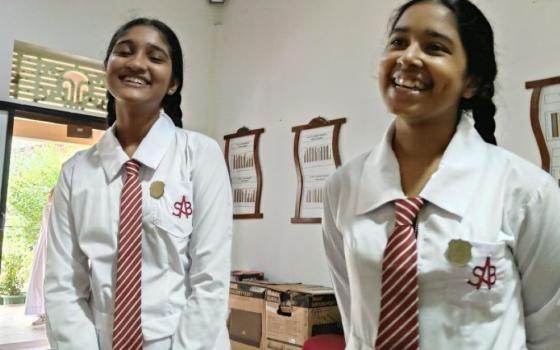PORT-AU-PRINCE, HAITI -- Yvrose Jacques uses her one leg to roll her wheelchair out of the hospital ward and onto the veranda at the LaKu LaPe Clinic to get a little fresh air and look up at the clear blue sky.
A smile crosses her face as visitors approach. She extends a hand for a warm embrace.
Yes, she’s happy, the 63-year-old Jacques says. She’s happy to be alive.
Never mind that her two-bedroom home was destroyed in the 2010 earthquake and that she, her 27-year-old daughter and her granddaughter now live in a tent, facing the heat of day and the tropical downpours with a thin layer of canvas over their heads.
“I cannot afford to build a new house,” she says. “I’m just waiting.”
Never mind that just weeks earlier, her life was in peril after she contracted cholera near the height of the epidemic that swept across Haiti.
Never mind that, as the effects of the waterborne disease subsided, her right leg began to swell. Then gangrene set in. Doctors discovered the blood flow in her leg was not normal and that they would have to amputate the limb at the knee.
Jacques was recovering at the clinic, run by the Missionaries of Charity Brothers, on the edge of notorious Cité Soleil. She cares for her granddaughter at the clinic so her daughter can go to work. Br. Rajit Kumar Dungdung, clinic director, thought that would be better than having Jacques stay in her tattered tent with the child.
“I feel at home,” she says.
The brothers who run the facility, an oasis in a community overrun with poverty and violence, minister in the tradition of Blessed Teresa of Kolkata. The clinic is part of an informal network of privately run health centers strung across Haiti that provide much-needed services in a country where health care options are few.
Dungdung, 40, who worked alongside Mother Teresa in his native India, heads a team that includes several brothers and four novices who work in a neighborhood where basic health care is limited.
In some ways, LaKu LaPe Clinic operates much like a hospital. Patients, some with serious injuries, are treated in two wards -- one for men and one for women. The wards have about a dozen beds each, allowing patients to stay as long as necessary to recover. Among patients staying recently were a man burned when the cologne he was using burst into flame from a nearby candle, a gunshot victim and a young woman with AIDS.
The brothers have received medical training. Two days a week -- Wednesdays and Saturdays -- they see patients with more routine health needs.
“I think they come here because they feel like it’s home,” Dungdung says.
Hospitals in Haiti’s health care system are few -- an estimated 30 for a population of 10 million. But plans are under way for two new facilities. One involves the Catholic Health Association of the United States teaming with Catholic Relief Services to rebuild the destroyed St. Francis de Sales Hospital in the center of Port-au-Prince. In Mirebalais, 35 miles north of the capital, Boston-based Partners in Health is building a 320-bed teaching hospital.
The new St. Francis de Sales Hospital will be the most modern in the Haitian capital. The $9.5 million, 200-bed facility will be built on the grounds of the original hospital, which was destroyed in the 2010 earthquake. The effort is being funded by 13 Catholic hospital groups with gifts up to $1.5 million; the St. Petersburg, Fla., diocese; and the Catholic Health Association.
Construction is expected to begin later this year and take up to two years to complete.
Anna van Rooyen, who heads Catholic Relief Services’ AIDS response in Haiti, said the partnership is designed to build a network that reaches across the entire Haitian health care system to provide care for all Haitians, “not just those who have the means.”



